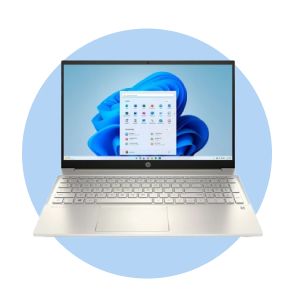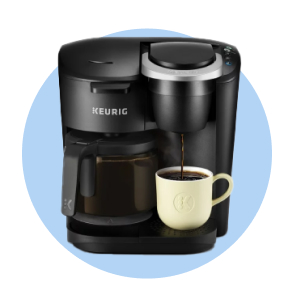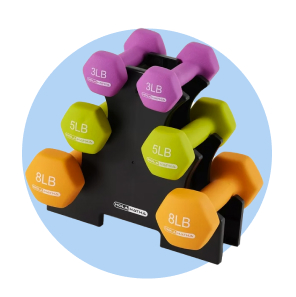
The Owners Guide to Business Security Monitoring
Protect your assets & your employees
If you own a business, then it’s your responsibility to safeguard your building, your assets and—most importantly—your employees. A business security monitoring solution can help you do just that. Whether you handle security yourself or entrust it to a third party, a comprehensive monitoring system can help you keep an eye on your business from anywhere, and at any time. Cameras, locks, alarms, sensors, motion detectors and other devices can all work in concert to protect both your goods and your staff.
Still, with thousands of different devices, apps and security firms, knowing where to start can be difficult. To choose the right security monitoring system for business purposes, you’ll need to consider which features you need, how much you’re willing to spend and whether you prefer an in-house or external solution. Once you understand your options, you’ll be ready to choose a system that can help provide peace of mind for years to come.
The basics of business security monitoring
“Business security monitoring” is not one specific technology. Rather, it refers to a variety of different technologies, tools and processes that keep tabs on your company’s physical space. Any device or service that lets you see, hear or otherwise observe your business when you’re not physically there is, in effect, a monitoring system.
Under that definition, there are thousands of security monitoring systems for business on the market. Rather than try to list every single tool—or combination of tools—we’ll instead focus on the two most common options. Broadly speaking, you can either buy devices and set up a monitoring system yourself, or you can entrust the process to an outside security vendor. Each method has pros and cons, but they’re both viable options.
If you devise a monitoring system in-house, then your staff will need to research devices, purchase them, set them up and maintain them. A robust business security monitoring solution should have, at the very least, a video camera and an alarm. You could also add sensors, motion detectors, smart locks and electronic access control systems, depending on how much surveillance your assets need.
Alternatively, you can hire one of the many security monitoring companies for business. At present, there are more than 11,000 private security companies in the United States, and that number seems to be increasing each year. From major nationwide providers to smaller local operations, you should be able to find a reputable company in your area. A third-party vendor will be able to choose the right gear for your company, set it up and troubleshoot it over time. Many of these companies can also do the monitoring themselves, freeing up your staff from the responsibility.

Key features in business security monitoring systems
Because monitored business security systems can take so many forms, it’s difficult to pinpoint what might be indispensable—or superfluous—for your particular business. There are three key features to look for in any worthwhile security system: real-time monitoring, remote access and components that integrate easily with one another.
Real-time monitoring
Real-time monitoring alerts you to security threats as they happen, rather than hours—or days—after the fact. Real-time security monitoring for business is available in almost every modern system, as it’s easy to transmit video footage and access records, motion sensor logs and other information via the internet. If you install your own system, you can usually opt to receive texts or app notifications if your devices detect anything unusual. If you contract an outside company, ensure that they offer 24/7 monitoring and that they have a series of contacts and fail-safes in case they need to notify someone outside of usual business hours.
Remote access
Depending on your business, it may be feasible—or even desirable—to have employees on-premises at all times, patrolling the grounds or watching camera feeds in a specialized security room. For many companies, though, remote access is a less expensive and more convenient alternative. Most modern security devices let you monitor and control them via web browsers or dedicated smartphone apps. If, for example, you get an alert about unusual camera activity, you could then turn on lights, lock doors and activate alarms, even if you’re nowhere near your workplace.
Integration
Integration, like most other business security system monitoring terms, can mean many different things, depending on your particular gear. Generally speaking, integration refers to all of the components in your security system working together. If you buy a camera, lock and smart lights from the same manufacturer, you may be able to monitor and control them all from the same software suite. This means that you can use a variety of connected devices to address potential security threats. Third-party security vendors usually employ integrated systems as a matter of course.

How to install & maintain your system
Setting up a business security monitoring system can be simple or complicated, depending on what you need and how much expertise you have in-house. If you want to create your own solution from scratch, you’ll need to:
- Determine which components you need
- Research and compare various devices
- Purchase gear
- Install hardware
- Set up software
- Train your employees
If you undertake this process yourself, remember that you should be able to integrate all of your devices in the same system. (They should all be from the same manufacturer, for example, or use the same software protocols.) These devices should be new enough to still receive software updates, as older gear sometimes has exploitable security vulnerabilities. You should also make sure that the devices and software don’t require any special training or skills to use—and if they do, that someone on staff has the necessary expertise.
Alternatively, you could outsource this process to a third-party security company. Some vendors will research the gear you need, order it, set it up and then leave the monitoring to you. Others will walk you through the whole process, then monitor your business as well. The latter option is more expensive, but also requires less ongoing work from your employees.
Security monitoring systems require upkeep over time. Physical gear, such as cameras and alarms, need regular cleaning and battery replacements. Digital systems require firmware and software updates, which sometimes require manual prompts. Don’t assume that a device is up to date just because it’s connected to the internet. Replace old gear as needed, and don’t wait until the second a component breaks to do so. Remember that it may take some time to order a replacement.

How much should a business security monitoring system cost?
Monitored business security systems can range in price from hundreds of dollars to tens of thousands, depending on what you need. Purchasing devices is one major expense, but it may not be the biggest one. Many smart video cameras, for example, offer online storage and access in exchange for recurring fees. Integrated software suites often require paid subscriptions, particularly as you add more devices to them. Third-party security vendors also charge money, both for initial setup and for ongoing monitoring. In general, bigger spaces and more valuable assets require more money to protect.
Determining the right budget for a monitoring system can be difficult, as no two companies need exactly the same security measures. If possible, you should start the process with a security audit, as it will show you where your company’s potential weak points are. Be sure to take both your physical security and cybersecurity practices into account. From there, make a rough estimate of how much a comprehensive security system would cost—devices, software, subscriptions, staff, training and so forth. If you wish, you can get an estimate from a third-party vendor and compare the two, which may help determine which is a better value.
Remember that no matter which method you choose, unexpected costs will sometimes arise. Budget some money for emergencies as well.
Secure your company with Walmart Business
If you’re ready to invest in business security monitoring, then Walmart Business can help. When you create a Walmart Business account, you’ll have access to security cameras, smart locks, motion detectors and more. You can also buy goods in bulk and access your company’s order history for both in-store and online purchases. Multiple users can share a single account and payment source.
To enjoy even more benefits, upgrade your account to a Walmart Business+ membership. With it, you’ll get free shipping from Walmart.com on orders $35 and up,1 free delivery from nearby Walmart stores2 and 2% back in Walmart Business Rewards on orders of $250 or more.3 Overall, your business could save more than $500 per year.4


Limited-time offer
Unlock your special promo code
Stay informed on Walmart Business news & get $20 off a $100 purchase!1
1Minimum order of $100. Promo code can be used one time & may not be combined with other offers. Offer not transferable & void where prohibited by law. Customer responsible for all applicable taxes. Offer expires 12/31/2025 at 11:59pm PT. Further restrictions apply. See terms at checkout for details. Promo code offers available in limited quantities. While supplies last.
1 Excludes most Marketplace items, freight and certain location surcharges.
2 Restrictions apply.
3 Rewards can only be used toward future purchases on Walmart Business. Additional terms apply.
4 Savings based on 1 free $35+ delivery order vs. $9.95 fee and 1 free shipping order under $35 vs. $6.99 fee biweekly, plus 2% Walmart Business Rewards on monthly order >$250 (average value of $400).
Exciting news awaits
Hear firsthand about new products, features & promotions.
By clicking submit, you agree to receive emails about Walmart Business and acknowledge you have read and agreed to our Terms of use and Privacy Policy.










